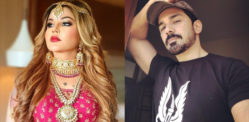Avoidant adults keep lovers at arm’s length.
Dating within South Asian circles blends inherited tradition with rapidly shifting modern norms, creating relationships that often feel simultaneously comfortable and chaotic.
Attachment theory offers a surprisingly useful compass in that layered landscape because it explains how early caregiving patterns still guide adult intimacy choices.
Developed by British psychiatrist John Bowlby and expanded by psychologist Mary Ainsworth, attachment theory has four main styles that shape our emotional responses to love.
Understanding those styles can illuminate why we chase commitment, retreat from vulnerability, or ride an exhausting rollercoaster between both extremes.
For British Asians juggling parental expectations, cultural taboos, and swipe-based matchmaking, recognising attachment patterns becomes essential rather than optional self-help jargon.
DESIblitz unpacks each style through a distinctly Desi lens to help you cultivate healthier, more fulfilling romantic connections.
Understanding Attachment Styles in a Desi Context
 Attachment styles emerge from our earliest interactions, yet they are not immovable personality labels etched into stone tablets.
Attachment styles emerge from our earliest interactions, yet they are not immovable personality labels etched into stone tablets.
In collectivist South Asian families, children often experience interdependence, hierarchical respect, and multigenerational caregiving, ingredients that influence attachment development differently from typical Western nuclear setups.
Research from University College London in 2022 found that British Indian and Pakistani adults reported higher anxious tendencies compared with their white peers, partly due to perceived parental control and community scrutiny.
Such findings remind us that cultural scripts around honour, marriage timing, and gender roles can reinforce particular insecurities or avoidance tactics.
However, culture does not override individual agency; recognising the script lets you consciously edit it rather than recite every inherited line.
Before diving into each attachment style, remember that self-reflection, therapy, and supportive friendships can all recalibrate your relational blueprint over time.
Secure Attachment
 People with secure attachment generally believe they are lovable and trust that others can be dependable, allowing intimacy without constant fear of abandonment.
People with secure attachment generally believe they are lovable and trust that others can be dependable, allowing intimacy without constant fear of abandonment.
Within Desi dating contexts, secure partners set respectful boundaries with families while embracing shared cultural rituals, creating a balanced bridge between independence and interdependence.
A secure individual might happily introduce a partner at a family Diwali gathering, yet calmly defend the relationship timeline against nosy aunties who demand wedding dates after the first gulab jamun.
Psychologist Dr. Reenee Singh notes that securely attached British Asians typically communicate expectations early, reducing hidden conflicts stemming from clashing cultural or religious backgrounds.
Because they regulate emotions well, secure partners are less rattled by WhatsApp response delays or rumours circulated through extended networks.
Their steadiness encourages healthier relational norms, demonstrating that you need not sacrifice cultural cohesion to enjoy emotional security.
Anxious Attachment
 Anxious attachment often develops when caregivers are inconsistent, leaving adults hypersensitive to signs of rejection and hungry for constant reassurance.
Anxious attachment often develops when caregivers are inconsistent, leaving adults hypersensitive to signs of rejection and hungry for constant reassurance.
In Desi dating, this can translate into obsessively tracking a partner’s Instagram likes or catastrophising when weekend plans clash with family obligations.
Because South Asian communities sometimes link a woman’s worth to marital status, anxiously attached women may fear being labelled “left on the shelf” and cling harder to unsuitable matches.
Men, pressured to secure financial stability before proposing, might worry that delays will push their girlfriend towards arranged introductions, fuelling jealous surveillance.
Partake in grounding techniques, such as mindfulness and journaling, to soothe spiralling thoughts before bombarding a partner with twenty missed calls.
By acknowledging the anxious urge yet choosing slower, transparent conversations, you gradually replace panic-driven habits with genuine intimacy.
Avoidant Attachment
 Avoidant attachment surfaces when caregivers dismiss emotional needs, teaching children that self-reliance ensures safety, and vulnerability invites disappointment.
Avoidant attachment surfaces when caregivers dismiss emotional needs, teaching children that self-reliance ensures safety, and vulnerability invites disappointment.
Later, avoidant adults keep lovers at arm’s length, fearing engulfment even while craving connection, a tension that becomes pronounced within tightly knit Desi circles.
If your worst nightmare involves shared family holidays in Goa with two sets of parents, you might occupy the avoidant end of the spectrum.
Community gossip can exacerbate avoidance because secrets feel safer than submitting a fragile heart to collective judgment or unsolicited matchmaking commentary.
Relationship coaches often advise avoidant daters to practise small disclosures, such as discussing career stress, before tackling deeper emotions like fear of commitment.
Gradual openness proves that emotional sharing need not equal losing autonomy, enabling richer relationships without surrendering personal space.
Disorganised Attachment
 Disorganised attachment, sometimes called fearful-avoidant, combines anxious craving with avoidant retreat, often rooted in trauma or chaotic caregiving.
Disorganised attachment, sometimes called fearful-avoidant, combines anxious craving with avoidant retreat, often rooted in trauma or chaotic caregiving.
This style can feel like driving with one foot on the accelerator and the other on the brake, leaving partners utterly confused about where they stand.
In Desi dating, disorganised behaviour may surface as intense romantic gestures followed by ghosting whenever marriage talk arises, creating painful whiplash for everyone involved.
Because many South Asian families discourage discussing mental health, individuals with unresolved trauma might internalise shame and misread their triggers.
Many counsellors recommend trauma-informed therapy, including EMDR and somatic approaches, to integrate fragmented memories and build safer relational strategies.
Healing disorganised patterns requires patience and professional support, yet progress offers the profound reward of finally feeling safe to love and be loved.
Cultivating Secure Bonds
 No matter your current orientation, attachment styles are adaptable because neural pathways remain plastic throughout adulthood.
No matter your current orientation, attachment styles are adaptable because neural pathways remain plastic throughout adulthood.
Regular self-inquiry helps you notice triggers such as unanswered messages, parental pressure, or ambiguous situationships that previously spiralled into self-sabotage.
Speaking with culturally competent therapists, many of whom now offer online sessions across the diaspora, translates theoretical insight into practical behaviour change.
Open discussions with partners about love languages, long-term goals, and boundaries reduce misunderstandings that cultural scripts often magnify.
Learning to soothe your nervous system through breathwork, physical activity, or spiritual practices like kirtan or yoga grounds emotions before conversations escalate.
Each incremental shift towards secure relating not only improves personal happiness but also models healthier relationship norms for future generations observing your journey.
Attachment theory offers more than clinical jargon; it provides a culturally adaptable map guiding Desi daters towards connections grounded in mutual respect rather than generational fear.
Knowing whether you operate from secure, anxious, avoidant, or disorganised tendencies is a gateway to intentional growth.
When you recognise patterns, you can separate inherited expectations about shaadi deadlines or caste compatibility from authentic personal values.
Healthy partnership flourishes when individuals negotiate tradition and modernity with curiosity instead of compulsion.
South Asian love stories already carry vibrant palettes of music, food, and ritual; adding emotional literacy makes those colours shine brighter rather than blur at the edges.
Ultimately, embracing secure attachment is less about fitting a Western mould and more about honouring your heritage while safeguarding your emotional wellbeing for love that genuinely lasts.






























































